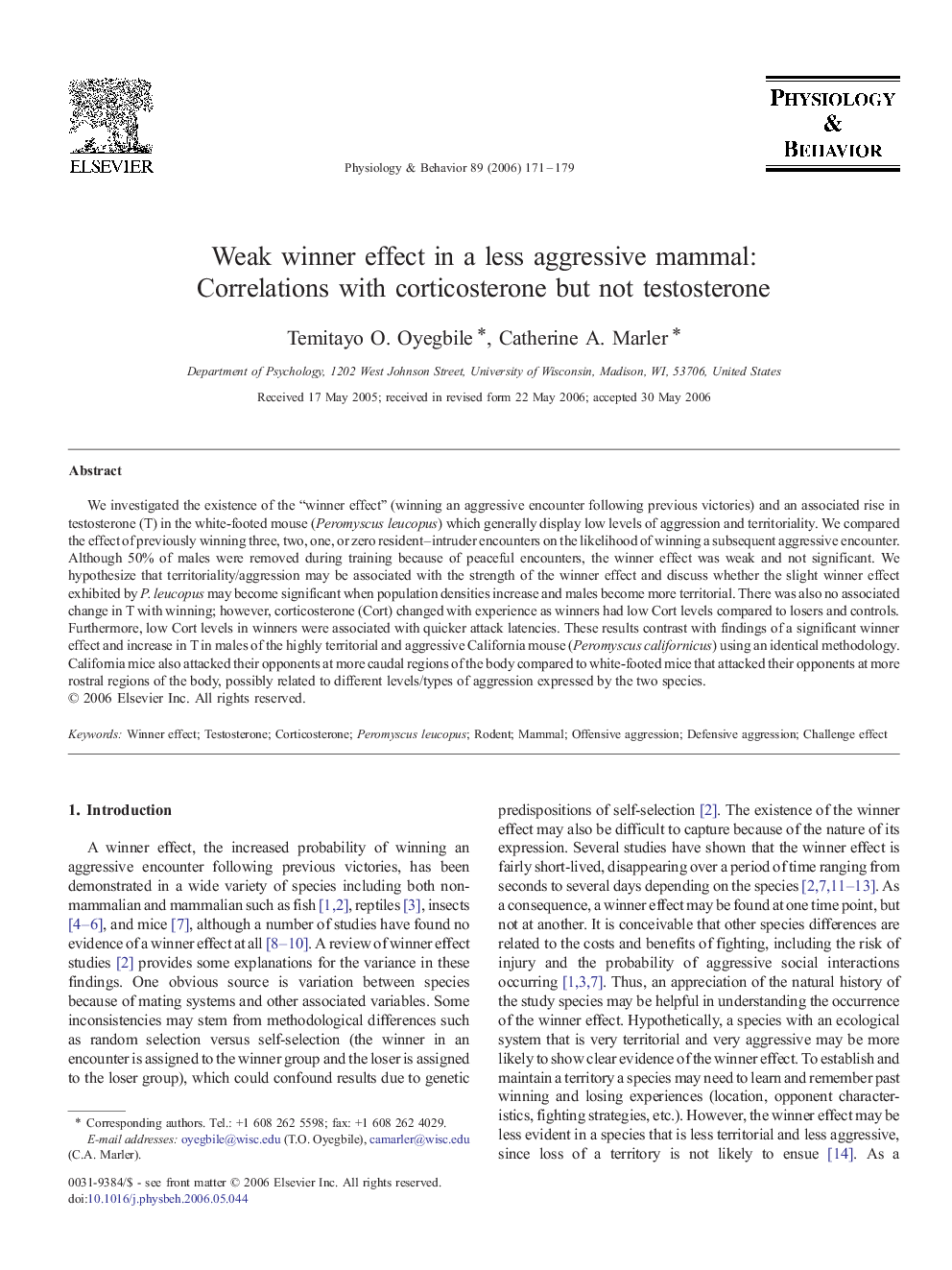| کد مقاله | کد نشریه | سال انتشار | مقاله انگلیسی | نسخه تمام متن |
|---|---|---|---|---|
| 2846282 | 1166415 | 2006 | 9 صفحه PDF | دانلود رایگان |

We investigated the existence of the “winner effect” (winning an aggressive encounter following previous victories) and an associated rise in testosterone (T) in the white-footed mouse (Peromyscus leucopus) which generally display low levels of aggression and territoriality. We compared the effect of previously winning three, two, one, or zero resident–intruder encounters on the likelihood of winning a subsequent aggressive encounter. Although 50% of males were removed during training because of peaceful encounters, the winner effect was weak and not significant. We hypothesize that territoriality/aggression may be associated with the strength of the winner effect and discuss whether the slight winner effect exhibited by P. leucopus may become significant when population densities increase and males become more territorial. There was also no associated change in T with winning; however, corticosterone (Cort) changed with experience as winners had low Cort levels compared to losers and controls. Furthermore, low Cort levels in winners were associated with quicker attack latencies. These results contrast with findings of a significant winner effect and increase in T in males of the highly territorial and aggressive California mouse (Peromyscus californicus) using an identical methodology. California mice also attacked their opponents at more caudal regions of the body compared to white-footed mice that attacked their opponents at more rostral regions of the body, possibly related to different levels/types of aggression expressed by the two species.
Journal: Physiology & Behavior - Volume 89, Issue 2, 30 September 2006, Pages 171–179